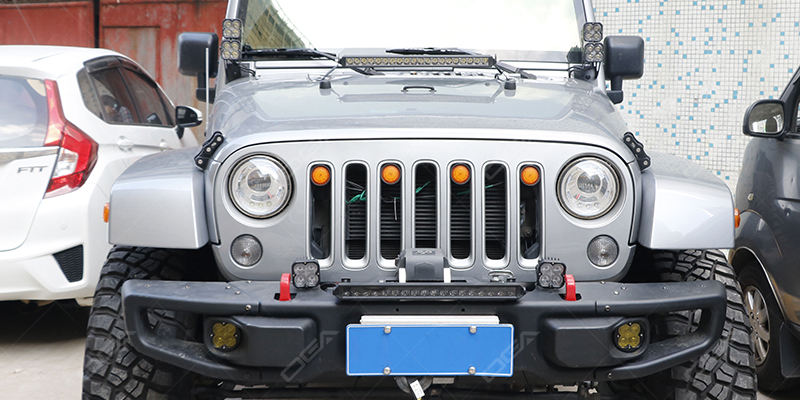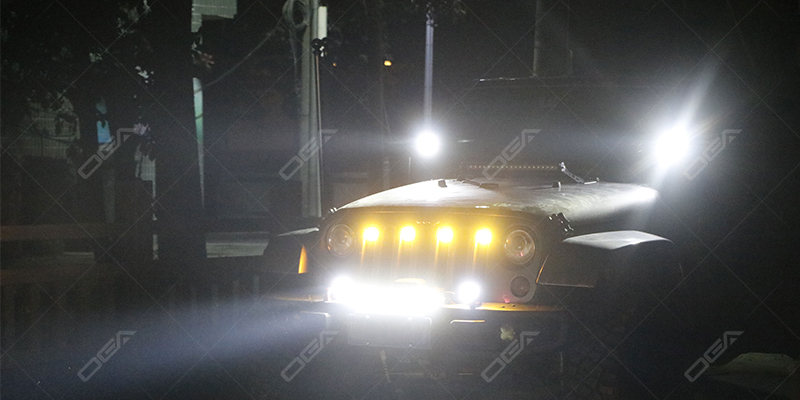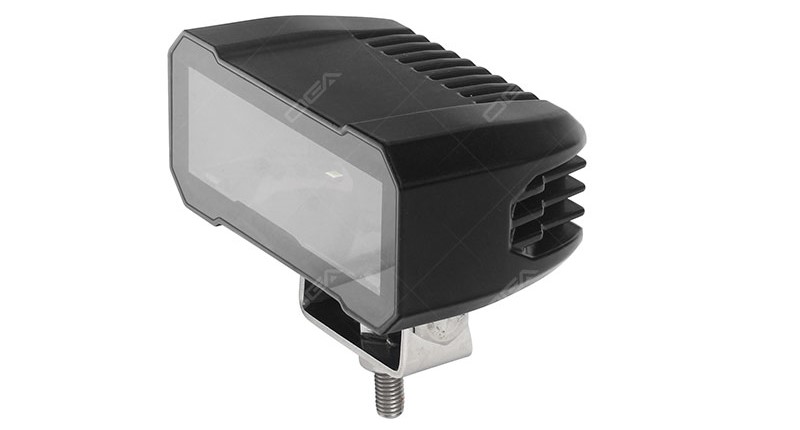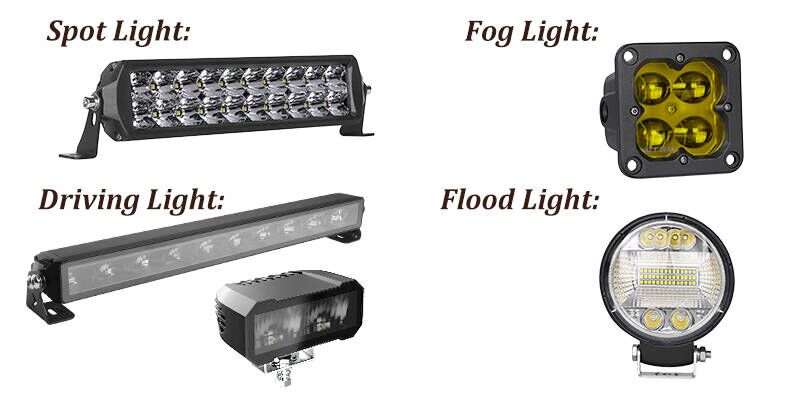When it comes to off-road vehicles, we always think of the auxiliary lights sited all over the vehicle's body. These lights not only make the car look unique, but for off-road enthusiasts who often travel far into the wild, these auxiliary lights contribute a lot to driving safety. Generally speaking, there is little room for modification of the stock lights, If you try to increase the brightness of the stock lights blindly, they will increase the load of the stock wiring harness and leave serious problems. And if you use them on road, they will probably affect the sight of the coming drivers and lead to some terrible car accidents. And so, off-road lights often require separate installation and the use of an independent wiring harness and switches panel.

The Basic Classification of Off-road Auxiliary Lights
Off-road auxiliary lights, as the name suggests, are a supplement to the stock car lights, their role is to provide a wider irradiation range or a farther irradiation distance. Generally, they can be divided into fog lights, spot lights, driving lights and flood lights.
Fog lights are characterized by their wide irradiation range, close distance, low brightness and slightly yellowish light color but with a strong ability to penetrate rain, fog and dust; spot lights are concentrated light, narrow irradiation range, far distance and high brightness; the driving lights take into account the characteristics of both above. Flood lights are to meet the special needs, such as the needs of large areas of close-range floodlighting.
The Right Position for The Right Lights
Spot lights and driving lights are the two most commonly used lights for off-road vehicle modifications. Spot light beam is very concentrated, its irradiation distance is relatively very far and barely scatter any light, and so they are suitable for installation on the roof rack. Note that the installation position for lights mounted on the roof rack should be behind the extension line of the windshield in order to avoid reflections on the hood or even the windshield, and so you are not going to pose a threat to your safe driving.

The driving light beam is concentrated, its irradiation is far but at the same time, a certain amount of floodlight can take into the lighting account at a close range, which is why it is the preferred light mounted on the front bar of the car. Normally, lights mounted on the front bar have the characteristic of not affecting the coming drivers' sights. And if the position of the mounted auxiliary lights is at the same horizontal line as the stock headlights, they should look delicate and beautiful. Speaking of looking good, OGA LED recently released two products that looked very unique, let's take a look at how these two automotive lighting solutions perform:
50 Series Mini Rectangle 4.5" LED Work Light
The 50 series is the LED vehicle lighting solution you have been looking for but haven't found. Designed from the latest lighting technology, the 50 series lights have a bezel-less design front face that is very innovative, and their high-efficient half convex reflector generates indirect light-emitting which produces much lesser stray light than the traditional one. They meet with ECE Regulation R10 and R149 compliance, for a 4.5 inches small LED work light, the driving beam it provided is very powerful.

58 Series Driving LED Light Bar with White Position Light
Bezel-less design with no use of any mounting screws on the front face not only gives these light bars an innovative look but also makes it easier to clean off dust, has lesser air resistance and better waterproof. A very slim white LED position light was built inside the light bar, and when the light bar itself is off, the turned-on position light inside is truly special to look at. The 58 series lights use a high-efficient half convex reflector, high-performance LED chips and fast heat dissipation system to generate a lasting high power driving light beam with less stray light. The 58 series lights are ECE Regulation R10, R148 and R149 compliant. Just check out the 50 and 58 series product links and watch them exceed your expectations!

OGA LED is committed to keeping your driving safe, that's why our engineers work tirelessly creating LED lighting applications for all cars, off-road vehicles, agricultural machinery and industrial heavy-duty machinery. Along with equipping your vehicle with our latest lighting systems, you should also know that the auxiliary lights installation process requirements are relatively strict, it is best to let someone professional to do it. At the same time, you could supervise the installation and be familiar with the wire harness routing and where you should install the switches panel, etc.

Installation Tips
1. Avoid using the wire harness of the stock lights, you should definitely use a separate wire harness, and remember to be wrapped with protective insulated rubber tape and fixed them firmly.
2. The auxiliary lights should have a separate fuse, it is best if you could put it in the stock fuse box and connect it through, if not, use a separate fuse, placed in a reliable and obvious location that you know.
3. Relays must be installed or build-in before the switches to ensure safety.
4. Avoid using any stock switch from the car. If possible, tap the switched circuit of your auxiliary lights into the existing switched circuit of cigarette lighter or other stock lights. When the vehicle is off, the auxiliary lights go off as well. Therefore, you can avoid excessive discharge of the battery caused by forgetting to turn off the auxiliary lights.
5. The best way to connect lamps and the wiring harnesses is through plug connections, which can facilitate the lamps in the repair, maintenance and temporary removal.







